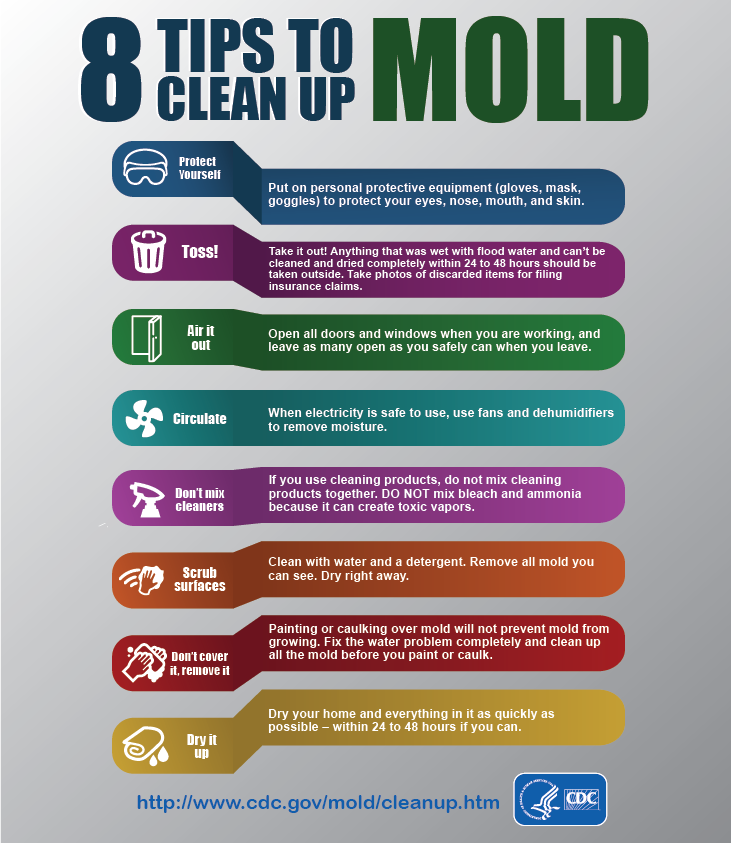Tips on Cleaning Mold After a Flood
Posted on by
 Returning to your home after a flood is a big part of getting your life back to normal. But you may be facing a new challenge: mold. What can you do to get rid of it? How do you get the mold out of your home and stay safe at the same time? CDC has investigated floods, mold, and cleanup, and offers practical tips for homeowners and others on how to safely and efficiently remove mold from the home.
Returning to your home after a flood is a big part of getting your life back to normal. But you may be facing a new challenge: mold. What can you do to get rid of it? How do you get the mold out of your home and stay safe at the same time? CDC has investigated floods, mold, and cleanup, and offers practical tips for homeowners and others on how to safely and efficiently remove mold from the home.
In 2005, thousands of people along the Gulf Coast were faced with cleaning up mold from their homes after Hurricanes Katrina and Rita. One of our first concerns was to let homeowners and others know how they could clean up mold safely. After Hurricane Sandy in 2012, we teamed up with other federal agencies to provide practical advice on mold cleanup. This guidance outlines what to do before and after going into a moldy building, how to decide if you can do the cleanup yourself or need to hire someone, and how you can do the cleanup safely.
Prepare to Clean Up
It isn’t necessary to identify the type of mold in your home, and CDC doesn’t recommend routine sampling for mold. If you are susceptible to mold, there may be a health risk; therefore, no matter what type of mold is present, it needs to be removed.
Before you start any cleanup work, call your insurance company and take pictures of the home and your belongings. Throw away, or at least move outside, anything that was wet with flood water and can’t be cleaned and dried completely within 24 to 48 hours. Remember – drying your home and removing water-damaged items is the most important step to prevent mold damage.
Protect Yourself
We offer specific recommendations for different groups of people and different cleanup activities. This guidance educates people about the type of protection (think: gloves, goggles, masks) you need for different parts of your mold cleanup. It also identifies groups of people who should and should not be doing cleanup activities.
Be Careful With Bleach
Many people use bleach to clean up mold. If you decide to use bleach, use it safely by wearing gloves, a mask, and goggles to protect yourself. Remember these four tips to stay safe:
- NEVER mix bleach with ammonia or any other cleaning product.
- ALWAYS open windows and doors when using bleach, to let fumes escape.
- NEVER use bleach straight from the bottle to clean surfaces. Use no more than 1 cup of bleach per 1 gallon of water when you’re cleaning up mold. If you are using stronger, professional strength bleach use less than 1 cup of bleach per gallon of water.
- ALWAYS protect your mouth, nose, skin, and eyes against both mold and bleach with an N-95 mask, gloves, and goggles. You can buy an N-95 mask at home improvement and hardware stores.
You can take steps to keep yourself and others protected while cleaning up mold after a flood. Make sure to follow CDC’s recommendations so you can return home safely.
Resources
Posted on by

